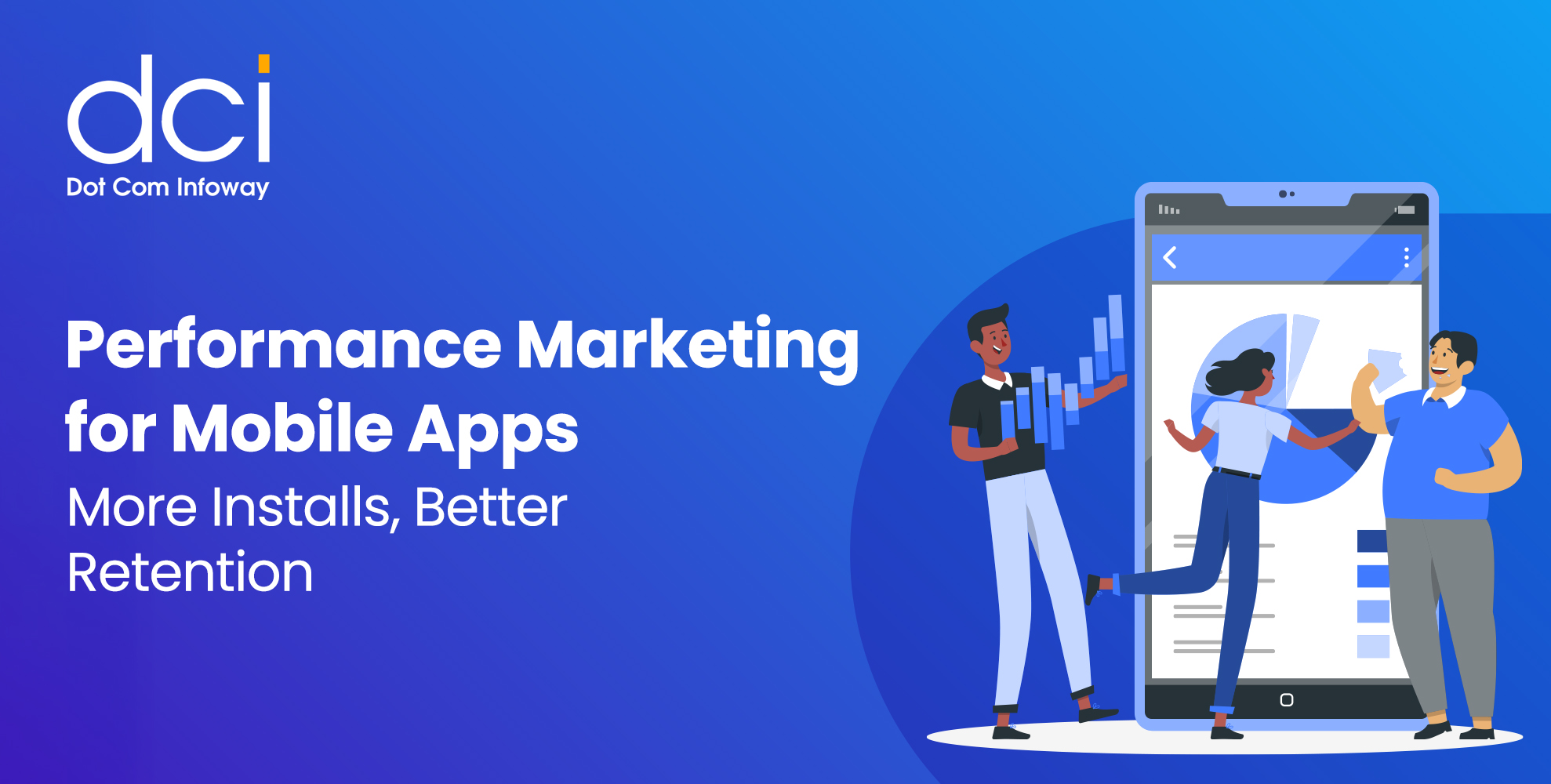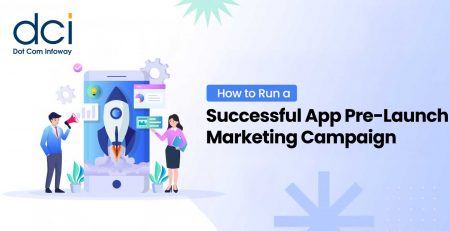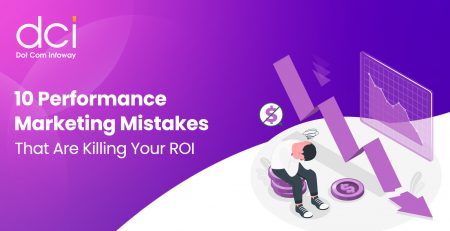Performance Marketing for Mobile Apps: More Installs, Better Retention
Launching your mobile app isn’t enough in today’s hypercompetitive app economy. The real challenge lies in acquiring the right users and keeping them engaged. That’s where performance marketing for mobile apps steps in. Performance marketing blends data, targeting, creativity, and analytics to drive measurable results installs, in-app purchases, and user retention. If you’re struggling with user churn or paying for installs that never convert, this blog will walk you through the most impactful strategies to elevate your app’s marketing efforts.

Why Performance Marketing for Mobile Apps Matters More Than Ever
As user acquisition costs continue to rise and privacy updates (like Apple’s App Tracking Transparency) reshape how marketers target audiences, it’s never been more critical to ensure that every dollar delivers results. Performance marketing ensures you’re not just buying traffic you’re buying value. Moreover, mobile users have shorter attention spans and a plethora of app options. This makes targeting the right audience at the right moment essential to standing out in crowded marketplaces.
The Role of Paid User Acquisition in App Growth
Paid user acquisition is at the heart of performance marketing for mobile apps. It’s what propels an app from obscurity into the charts. Whether it’s Facebook Ads, Google UAC (Universal App Campaigns), or TikTok ads, each platform provides targeting features that help you reach users by interest, behavior, device, or location.
But here’s the kicker not all installs are created equal. You want users who engage, convert, and stay. That’s why optimizing for Lifetime Value (LTV) and Retention Rates is more important than simply driving download volumes. Paid campaigns should therefore be A/B tested rigorously, with creatives tailored to different audience segments and geographies.
App Store Optimization (ASO) as a Performance Channel
ASO is often considered a one-time task. But in reality, it’s an ongoing process that can drastically enhance the performance marketing funnel. A well-optimized app listing boosts your visibility organically and improves conversion rates for paid campaigns. If users land on your app’s page and don’t convert, your ad dollars go down the drain.
Start by refining your app title, description, screenshots, and preview video. Use A/B testing tools to test icons and creatives. Combine this with keyword optimization to ensure discoverability. When ASO and paid marketing are aligned, your Cost Per Install (CPI) drops, and your organic installs get a lift a beautiful synergy.
Retargeting Campaigns to Boost App Engagement
It’s common for users to install an app and never open it again. Performance marketing for mobile apps isn’t just about acquisition retention is key. Retargeting campaigns help re-engage users who have abandoned the app or haven’t completed a desired action, like registration or purchase.
Platforms like Facebook and Google offer deep-linking capabilities that allow you to direct users to specific screens within your app. Use personalized messaging, dynamic ads, or special offers to bring them back. Segment your audience based on their in-app behavior to make your campaigns even more relevant.
Influencer Partnerships: A Hidden Gem in Performance Strategy
Influencers can add an authentic layer to your performance strategy. Especially on platforms like YouTube, Instagram, or TikTok, influencers drive high-intent traffic because their audience trusts them. Micro-influencers, in particular, offer cost-effective performance opportunities. Track every campaign using promo codes or deep links, and pay influencers based on installs or actions, not vanity metrics. This ensures your investment is performance-based, aligning with your overall strategy.
Leveraging Programmatic Advertising for User Acquisition
Programmatic advertising automates ad placements using AI and real-time bidding. It allows you to reach users across multiple networks with precision. For mobile apps, this means your ads can show up in apps, games, and websites wherever your target audience hangs out.
Programmatic platforms offer granular data and predictive algorithms that improve campaign performance over time. The key is to ensure that you have a clear attribution model in place. Whether you use SKAdNetwork, MMPs (Mobile Measurement Partners), or a custom solution, tracking is everything.

Ready to boost your website’s rankings and online visibility?
Discover how our expert SEO services can resolve ranking issues, drive traffic, and elevate your website’s performance to the next level!
Optimizing for Retention: The True ROI of Performance Marketing for Mobile Apps
Acquiring users is just the first step. Retention is where profit lives. Design onboarding flows that educate and excite users. Use push notifications, email campaigns, and in-app messages to guide users toward high-value actions. More importantly, measure everything.
Cohort analysis, funnel tracking, and user path insights help you spot drop-off points. Once identified, tweak your UX or offer incentives to encourage deeper engagement. Apps that retain users outperform in every metric LTV, virality, and even app store rankings.
Creative A/B Testing to Lower CPA and Increase ROAS
In the world of performance marketing for mobile apps, creatives can make or break your campaign. From banner designs to video ads, your messaging and visuals need to resonate with your audience. Test different ad formats, CTAs, and storytelling angles.
Video ads with emotional hooks often outperform static images. However, in some cases, a clean carousel showing app benefits might convert better. The only way to know? Test, learn, iterate. Keep your cost per acquisition (CPA) low while improving your return on ad spend (ROAS).
Understanding Attribution Models in Mobile App Marketing
Attribution helps you identify which channel or campaign led to a conversion. Without it, optimizing your performance strategy is like driving blind. Single-touch models (like last-click) are outdated. Embrace multi-touch and data-driven attribution to get a clearer picture.
Using platforms like Adjust, Appsflyer, or Branch, you can analyze user journeys across multiple touchpoints. This insight allows you to allocate budget more effectively and kill underperforming channels quickly.
The Future of Performance Marketing for Mobile Apps
As the landscape evolves, privacy regulations and cookie deprecation will force marketers to rely more on contextual targeting and first-party data. Machine learning and automation will play a bigger role in campaign optimization. To stay ahead, brands must blend creativity with data and never stop experimenting.
Successful apps will be the ones that treat users not as one-time converters, but as long-term community members. The era of spray-and-pray advertising is over. Precision, personalization, and performance are the new pillars.
Performance Marketing for Mobile Apps
In essence, performance marketing for mobile apps is not a single tactic but an ecosystem. It connects paid channels, organic growth, creative strategy, and data analytics into a seamless loop of constant improvement. Every install, every click, and every user action should be tracked, optimized, and aligned with your growth goals. When done correctly, this approach doesn’t just fuel installs — it builds brand loyalty, drives revenue, and sets your app apart in a crowded market.
Conclusion
Performance marketing for mobile apps is a dynamic, ever-evolving discipline. It’s not about throwing money at downloads; it’s about investing in strategies that drive meaningful outcomes — long-term engagement, loyal users, and scalable growth. If you’re serious about your app’s success, it’s time to master the art and science of performance marketing.















